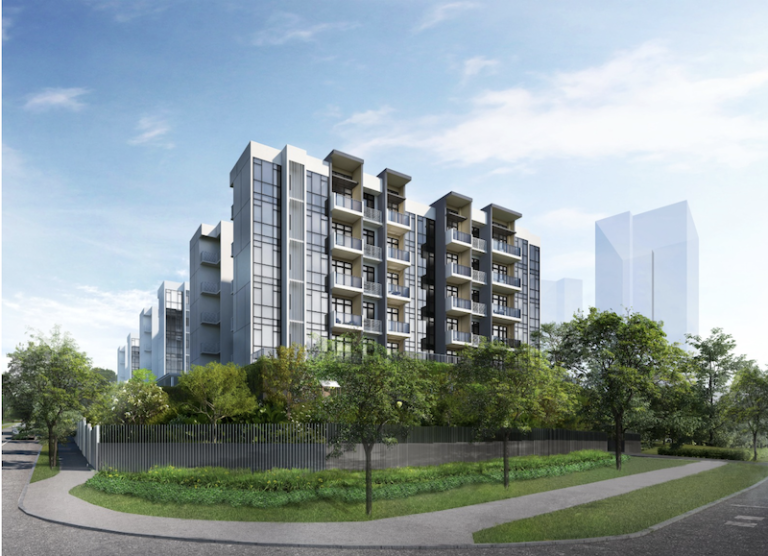In the process of finding the best home loan package? We understand how some mortgage terms can be confusing especially for first-timers. If you’re taking a bank loan for your property purchase, there are key terms to understand when navigating the financial planning process.
Contents
The Mortgage Servicing Ratio
Mortgage Servicing Ratio (MSR) is a home loan limit imposed by the Monetary Authority of Singapore (MAS). It applies to two types of properties: HDB flats and Executive Condominiums (EC).
How does MSR work?
MSR is capped at 30% of your gross monthly income (including employees’ CPF contribution). Your gross monthly income does not include employers’ CPF contributions.
For example, if you earn $3,500 per month, your loan eligibility is capped at $1,050 per month.
How about those with variable income?
If you have variable income (e.g. working freelance), you can only take 70% of your variable income for MSR calculations.
Scenario:
Alif is a full-time software engineer working in a multinational company, earning $4,000 and a freelance website developer, earning $3,000.
[Fixed Income + (70% x Variable Income)] x 30% = MSR
[$4,000 + (70% x $3,000)] x 30%
= ($4,000 + $2,100) x 30%
= $6,100 x 30%
= $1,830
Alif’s loan eligibility is capped at $1,830 per month.

Total Debt Servicing Ratio (TDSR)
Total Debt Servicing Ratio (TDSR) is also a home loan limit implemented by MAS. It applies to both public and private properties.
How does TDSR work?
TDSR sets limits on how much a home buyer can borrow. It is capped at 55% (as of 16 Dec 2021) of your gross monthly income. This aims to encourage prudent borrowing by households and strengthen credit underwriting standards by financial institutions.
Financial institutions must ensure that borrowers’ monthly repayment for all debts does not exceed 55% of their monthly income. This includes the mortgage, credit card bills, car loans, personal loans, and so on.
How about those with variable income?
Those who have a variable income, such as self-employed freelancers, can only use 70% of their total income for TDSR calculations.
Scenario:
Michelle, a freelancer, earns $7,000 a month with an existing car loan of $1,000.
[(70% of variable income) x 55%] – outstanding loans = TDSR
= [(70% x $7,000) x 55% – $1,000)]
= ($4,900 x 55%) – $1,000
= $2,695 – $1,000
= $1,695
Michelle’s maximum home loan is capped at $1,695 per month.
What is the difference between MSR and TDSR?
MSR limits the amount of money you can borrow based on your income, without considering other loans you might have. TDSR takes into account ALL of your loan repayments, including outstanding non-mortgage loans.
If you’re buying an HDB or EC with a bank loan, you need to pass both criteria – MSR calculations followed by TDSR calculations.
Scenario:
Clarence earns a fixed $5,000 monthly salary with a car loan of $1,000 and a study loan of $800.
First Criteria: MSR
Fixed Income x 30% = MSR
$5,000 x 30%
= $1,500
Clarence’s loan eligibility is capped at $1,500 per month.
Second Criteria: TDSR
Fixed Income x 55% = TDSR
$5,000 x 55%
= $2,750
Clarence’s monthly repayment for all debts cannot exceed $2,750.
Clarence’s outstanding loans:
$1,500 (MSR) + $1,000 (car loan) + $800 (study load) = $3,300.
Clarence’s bank loan can’t be approved because he did not pass the second criteria – his outstanding loans are more than $2,750. For such cases, you can reduce your obligations to pass the criteria for TDSR, i.e. Take a lower loan amount or do pledging to borrow a higher loan amount.
You may be wondering, why were these two terms introduced? Both MSR and TDSR were implemented to prevent over-leveraging. There was a problem with people taking huge home loans that they couldn’t afford. Another issue was the rising cost of property because since there were no loan restrictions, investors kept purchasing more properties.
The good news is, you can pass the criteria for MSR and TDSR in various ways, such as making a bigger down payment or buying a less expensive property. Always be prudent in your financial planning.
Home financing made simple
Discover the best home loan rates across all the banks, and let us draw the comparisons for you. We’ll find you the best loan tailored to your needs – free of charge. Because at Ohmyhome, we’re always by your side, always on your side.
Call us at 6886 9009 to secure an appointment with any of our Super Agents or message us in the chatbox at the bottom, right-hand corner of the screen. You can also WhatsApp us at 9755 9283!



































































